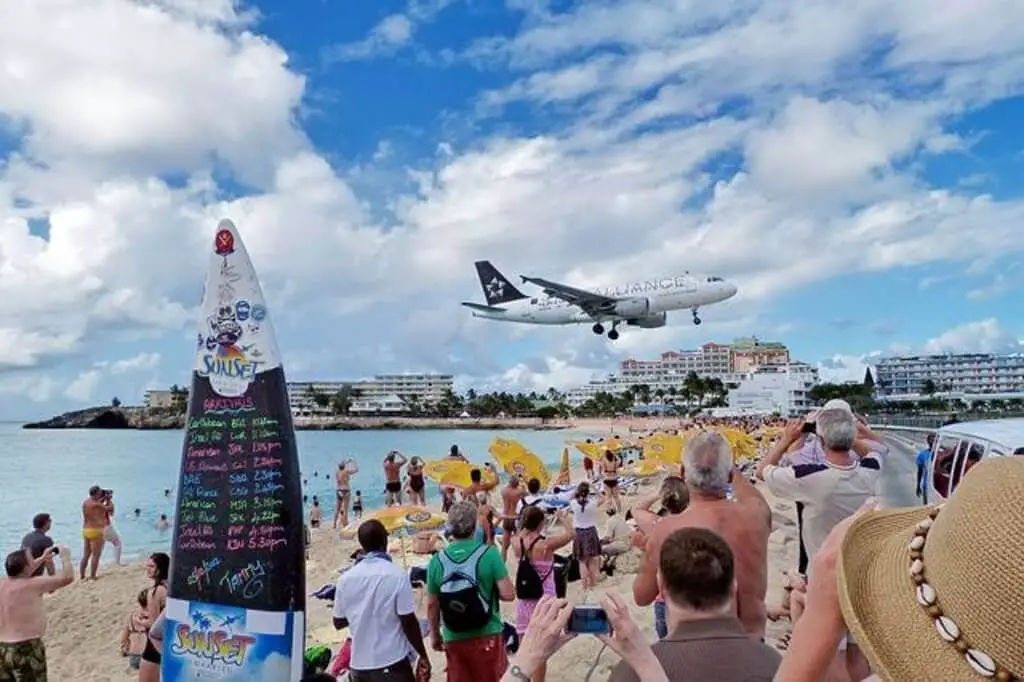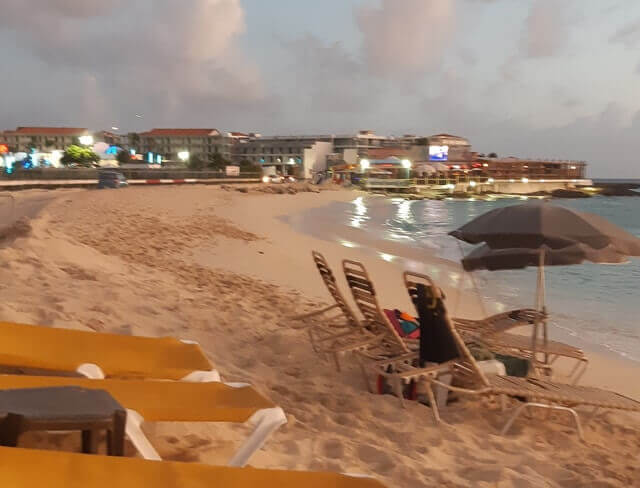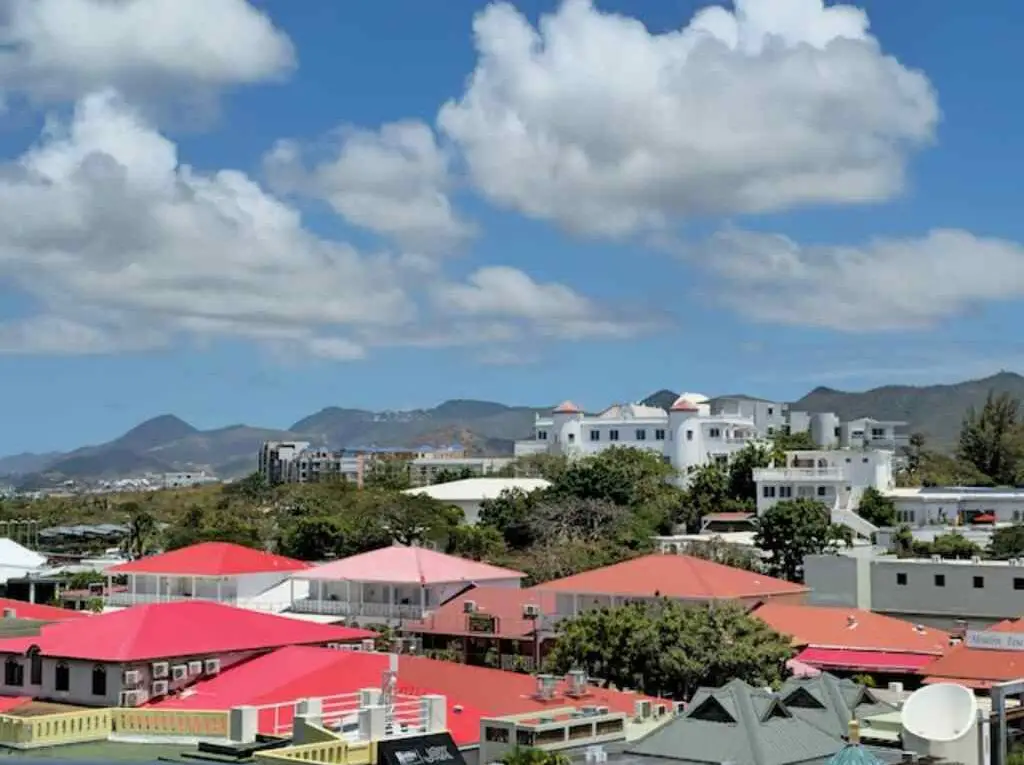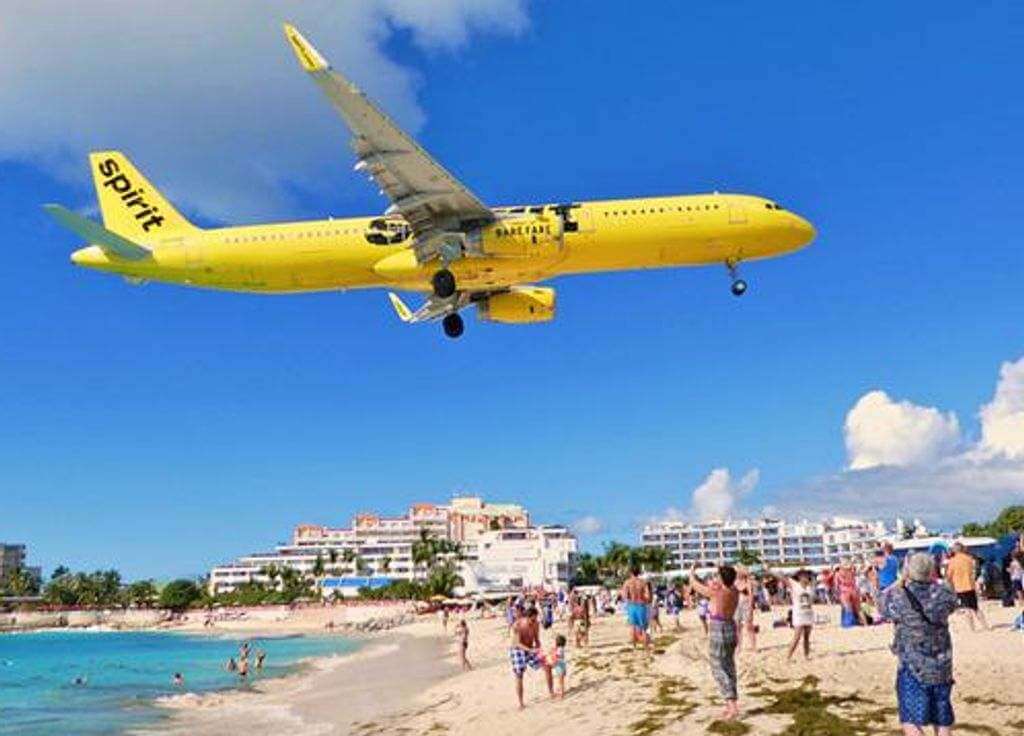How Did Sint Maarten Airport Get Its Name? Revealed!
Welcome to our article dedicated to unraveling the mystery behind the name of Sint Maarten Airport. Situated on the island of Sint Maarten, this airport is renowned for its stunning views and heart-stopping landings.
However, not many people know the story behind its name. In this article, we will delve into the intriguing history of Sint Maarten Airport and uncover “How Did Sint Maarten Airport Get Its Name?”
The airport holds a significant tale of honor and appreciation, as it is named after Princess Juliana of the Netherlands.
Join us as we explore the origins and symbolism behind one of the most fascinating airports in the world, paying tribute to the influential figure whose contributions to the island and aviation led to this distinguished name.
Table of Contents
- 1 Key Takeaways
- 2 How Did Sint Maarten Airport Get Its Name?
- 3 The Beginnings of Sint Maarten Airport
- 4 The Significance of the Sint Maarten Airport Name
- 5 The Naming Process of Sint Maarten Airport
- 6 The Etymology of Sint Maarten Airport Name
- 7 The Growth and Development of Sint Maarten Airport
- 8 The Impact of Sint Maarten Airport on the Local Community
- 9 Future Plans and Innovations for Sint Maarten Airport
- 10 Conclusion
- 11 The FAQs About Sint Maarten Airport
- 11.1 How did Sint Maarten Airport get its name?
- 11.2 When was Sint Maarten Airport established?
- 11.3 What is the significance of the Sint Maarten Airport name?
- 11.4 What are some interesting facts about Sint Maarten Airport?
- 11.5 What are the future plans for Sint Maarten Airport?
- 11.6 How does Sint Maarten Airport impact the local community?
- 12 Author
Key Takeaways
- Sint Maarten Airport is also known as Princess Juliana International Airport.
- It was named after Princess Juliana of the Netherlands during its inauguration in 1943.
- Princess Juliana played a crucial role in the airport’s development and was honored for her contributions to the island and aviation.
How Did Sint Maarten Airport Get Its Name?
Sint Maarten Airport, also known as Princess Juliana International Airport, got its name in honor of Princess Juliana of the Netherlands. The airport was named after her during its inauguration in 1943.
Princess Juliana played a significant role in the airport’s development, and the name ‘Princess Juliana International Airport’ was chosen to commemorate her contributions to the island and aviation.
The Beginnings of Sint Maarten Airport
Sint Maarten Airport, also known as Princess Juliana International Airport, is located on the Dutch side of the island of Saint Martin in the Caribbean. The airport began as a military airstrip during World War II, used primarily by the United States Air Force. However, it wasn’t until the 1950s that the airport was opened to commercial use.
Initially, the airport had a small terminal building and limited facilities, with only a few airlines operating flights to and from the island. However, as the island’s tourism industry grew, the airport underwent a number of expansions and upgrades to accommodate the increasing number of visitors.
One significant milestone in the history of Sint Maarten Airport was the construction of a new terminal building in 1985. This modern facility featured improved amenities and increased capacity for passengers and airlines.
The Impact of Tourism
The growth of Sint Maarten Airport can largely be attributed to the success of the island’s tourism industry. The airport serves as the main gateway for visitors to the island, with many airlines offering direct flights from major cities in North America, Europe, and the Caribbean.
In recent years, the airport has seen a significant increase in passenger traffic, with over 1.8 million travelers passing through its gates in 2019. This growth has brought a number of challenges, including the need for additional infrastructure and resources to handle the influx of visitors.
The Modern Airport
Today, Sint Maarten Airport is a modern facility with state-of-the-art technology and amenities. The airport boasts a variety of dining and shopping options, as well as a VIP lounge and duty-free stores for travelers. It also features a private jet terminal and facilities for general aviation.
Despite its growth and success, Sint Maarten Airport has faced a number of challenges over the years, including natural disasters such as hurricanes and earthquakes. However, the airport has demonstrated its resilience and ability to adapt to changing circumstances, remaining a vital hub for travel and commerce in the Caribbean.
The Significance of the Sint Maarten Airport Name
Sint Maarten Airport is not only an airport that stands out for its beauty and unique position in the Caribbean, but also for its name which carries an important significance. The name Sint Maarten Airport is a reference to the island on which it is located and has a deep historical significance.
The island of Sint Maarten was named after Saint Martin of Tours, a Catholic saint from the 4th century. The island was discovered by Christopher Columbus in 1493 and was later colonized by the French and Dutch. The island was divided into two parts in the 17th century, with the French and Dutch sharing the island.
The airport’s name refers to the Dutch part of the island, which is officially known as Sint Maarten (Dutch for Saint Martin). The name is a tribute to the island’s history and culture, as well as its shared heritage between the French and Dutch.
The Island’s Cultural Significance
The name Sint Maarten carries with it many cultural and traditional aspects of the island. The island itself has a rich and diverse cultural history, with influences from Africa, Europe, and indigenous groups. The island is known for its music, dance, and art, as well as its unique cuisine.
The airport’s name is a nod to the local culture and its significance to the island’s history. It serves as a symbol of the island’s shared heritage and cultural richness, highlighting the beauty and diversity of the island.
The Historical Significance of the Name
The name Sint Maarten is also significant for its historical roots. The island has a long history of colonization and trade, with the Dutch and French playing a major role in its development.
The airport’s name reflects this colonial history, as well as the shared history and influence of both Dutch and French cultures on the island. It serves as a reminder of the island’s past and the important role it played in the history of the Caribbean and the world.
In conclusion, the name Sint Maarten Airport has a deep significance and serves as a tribute to the island’s history, culture, and shared heritage. It reflects the island’s cultural richness and its historical roots, highlighting the importance of this Caribbean gem to the world.

The Naming Process of Sint Maarten Airport
The process of choosing a name for Sint Maarten Airport was a thorough and deliberate one. The airport authorities considered a range of factors before arriving at the final decision.
The Considerations
One of the main considerations was to select a name that reflected the cultural identity of the island and its people. The name needed to be meaningful and recognizable to the local population, as well as to visitors from around the world.
Another factor was to choose a name that would be easy to pronounce and remember for international travelers. The name needed to be catchy and distinctive, as well as being free from any negative connotations or associations.
The Shortlist
After careful consideration, a shortlist of potential names was drawn up. This list included names that had historical significance, as well as names that reflected the natural beauty of the island.
One name that was seriously considered was “Juliana Airport,” named after Queen Juliana of the Netherlands. However, this name was ultimately rejected due to concerns that it would be confusing, given that there was already an airport in the Dutch city of Rotterdam with the same name.
The Final Decision
After much deliberation, the airport authorities finally settled on the name “Princess Juliana International Airport.” This name honored the same Queen Juliana who had once ruled the Netherlands, and also reflected the pride and affection that the people of Sint Maarten had for their royal heritage.
Today, Princess Juliana International Airport remains one of the most popular and well-known airports in the Caribbean, thanks in part to its distinctive name and the rich history and culture it represents.
The Etymology of Sint Maarten Airport Name
The name “Sint Maarten” originates from Saint Martin of Tours, a 4th-century Catholic bishop. The island of Sint Maarten was named after him by Christopher Columbus who discovered the island on November 11, 1493, Saint Martin’s feast day.
As for the airport, the name “Princess Juliana International Airport” was officially bestowed in honor of Juliana of the Netherlands, who served as queen from 1948 to 1980. Queen Juliana was beloved in the Caribbean, having visited the islands numerous times during her reign.
The airport’s name therefore serves as a tribute to a respected and much-loved figure in the history of the Netherlands and the Caribbean.
The Growth and Development of Sint Maarten Airport
Sint Maarten Airport has come a long way since its humble beginnings. Over the years, the airport has undergone significant growth and development, evolving into a major transportation hub for the Caribbean region.
Originally built in 1942, the airport served primarily as a military base during World War II. After the war, it was used for commercial flights, but only on a limited basis. In 1964, the airport underwent a major expansion, including the construction of a new terminal building and runway.
Throughout the 1970s and 1980s, Sint Maarten Airport continued to grow, attracting more airlines and increasing its passenger traffic. In 1984, a second runway was built to accommodate larger aircraft.
| Year | Event |
|---|---|
| 1942 | The airport is built as a military base during World War II |
| 1964 | The airport undergoes a major expansion, including a new terminal building and runway |
| 1984 | A second runway is built to accommodate larger aircraft |
Today, Sint Maarten Airport is one of the busiest airports in the Caribbean, serving millions of passengers each year. It has become a major gateway to the region, connecting travelers to destinations across the Caribbean and beyond.
The airport has also been at the forefront of innovation, implementing cutting-edge technologies to enhance its operations. In recent years, Sint Maarten Airport has introduced state-of-the-art baggage handling systems, advanced security screening procedures, and modern passenger facilities.
Looking ahead, Sint Maarten Airport is poised for continued growth and development. Proposed expansion plans include the construction of a new terminal building, additional parking facilities, and improvements to the airport’s air traffic control systems.

The Impact of Sint Maarten Airport on the Local Community
Sint Maarten Airport has played a significant role in the development of the local community. As the primary gateway to the island, it has facilitated economic growth, tourism, and transportation for the region.
Economy
The airport has been a vital contributor to the island’s economy. It has created numerous employment opportunities in various sectors, including airport operations, tourism, and hospitality. The airport also generates revenue for the government through taxes, fees, and other charges.
Furthermore, the airport’s proximity to the neighboring island of Saint Martin has enabled the development of cross-border trade and commerce. It has been a vital link for importing and exporting goods, contributing to the growth of both islands’ economies.
Tourism
Sint Maarten Airport has been instrumental in promoting tourism in the region. Its strategic location in the Caribbean has made it an attractive destination for travelers from around the world. The airport has provided convenient access to the island’s stunning beaches, natural attractions, and cultural heritage sites.
The airport has also been a significant contributor to the island’s cruise tourism industry. Its facilities and services have enabled the smooth arrival and departure of cruise ships, providing visitors with a hassle-free experience.
Transportation
Sint Maarten Airport has been a crucial transportation hub for the region, connecting the island to major destinations in the Caribbean, North America, and Europe. Its modern facilities and services have made it a preferred transit point for travelers.
The airport has also been instrumental in providing medical evacuation services, allowing patients to receive timely and vital medical care. Its facilities and capabilities have made it a vital asset for the region’s healthcare system.
Overall, Sint Maarten Airport has been a pillar of the local community, contributing to its growth, development, and prosperity. Its significance extends beyond the island, affecting the wider Caribbean region and beyond.
Future Plans and Innovations for Sint Maarten Airport
Sint Maarten Airport has always been at the forefront of innovation and development in the aviation industry. With its modern facilities and state-of-the-art technology, the airport continues to attract visitors from all over the world. Looking ahead, there are several exciting plans and innovations in the pipeline to enhance the airport’s operations and improve the overall passenger experience.
New Terminal Building
One of the most significant projects currently underway at Sint Maarten Airport is the construction of a brand new terminal building. This new facility will provide additional space for passengers, a modernized baggage handling system, and improved security measures. The new terminal is set to be completed in the coming years and will greatly enhance the airport’s capacity and efficiency.
Green Initiatives
Sint Maarten Airport has also taken significant steps towards promoting sustainability and reducing its carbon footprint. The airport has implemented various green initiatives, such as the use of solar panels to power its facilities and the introduction of electric ground support equipment. These initiatives are part of the airport’s commitment to preserving the environment and promoting sustainable practices.
Enhanced Security Measures
In the wake of global security concerns, Sint Maarten Airport has implemented several measures to enhance passenger safety and security. These include the installation of advanced security screening equipment and the deployment of additional security personnel. The airport has also established closer cooperation with international security agencies to ensure the highest possible standards of safety and security for all passengers.
Improved Airport Access
Sint Maarten Airport is also exploring ways to improve access to the airport for both passengers and cargo. This includes the development of new roads and transportation networks, as well as the expansion of cargo facilities to accommodate growing demand. These initiatives will help to further improve the airport’s efficiency and accessibility, making it easier for passengers and cargo to reach their destinations.

Conclusion
The renowned Sint Maarten Airport, recognized worldwide as Princess Juliana International Airport, owes its name to the esteemed Princess Juliana of the Netherlands.
Her significant involvement in the airport’s development and her contributions to the island and aviation led to this fitting tribute.
As an iconic aviation hub, the airport’s name stands as a testament to the historical significance and continued impact of Princess Juliana’s legacy.
The FAQs About Sint Maarten Airport
Here are some frequently asked questions and answers about Sint Maarten Airport:
How did Sint Maarten Airport get its name?
Sint Maarten Airport was named after the island it is located on, Sint Maarten/Saint Martin. The island is divided between two countries, with the northern half being a French overseas collectivity and the southern half being a constituent country of the Kingdom of the Netherlands.
When was Sint Maarten Airport established?
The airport was established in 1943 as a military base during World War II. It was later converted to a civilian airport in 1948.
What is the significance of the Sint Maarten Airport name?
The name Sint Maarten Airport represents the shared cultural and historical heritage of the island and its two nations. It serves as a symbol of unity and cooperation between the French and Dutch sides of the island.
What are some interesting facts about Sint Maarten Airport?
Sint Maarten Airport is known for its unique location, with planes flying over a public beach just before landing. This has made it a popular tourist destination and a favorite spot for plane spotters. The airport has also faced challenges due to its location, including environmental concerns and safety issues.
What are the future plans for Sint Maarten Airport?
Sint Maarten Airport has plans to upgrade its facilities and expand its runway to accommodate larger planes. This is expected to increase tourism and economic activity on the island.
How does Sint Maarten Airport impact the local community?
Sint Maarten Airport plays a crucial role in the economy of the island, providing jobs and attracting tourists. It also serves as a transportation hub for the region, connecting Sint Maarten to other Caribbean islands and the rest of the world.
These are some of the most commonly asked questions about Sint Maarten Airport. If you have any other queries or interesting facts to share, feel free to leave a comment below!




